New Zealand isn’t that wide – you can ride right across it in a day. On a scooter. In fancy dress…
New Zealand is well known for its endurance events, and one of them is the annual Coast to Coast, in which competitors run, cycle and kayak their way the 151 miles across South Island. But in 2009, another South Island event was born, created by Jayne and Mike Rattray and intended to support a friend diagnosed with bowel cancer: “We thought if he’s going to get a sore butt, then we should too!” (A robust sense of humour, the Kiwis – Ed).
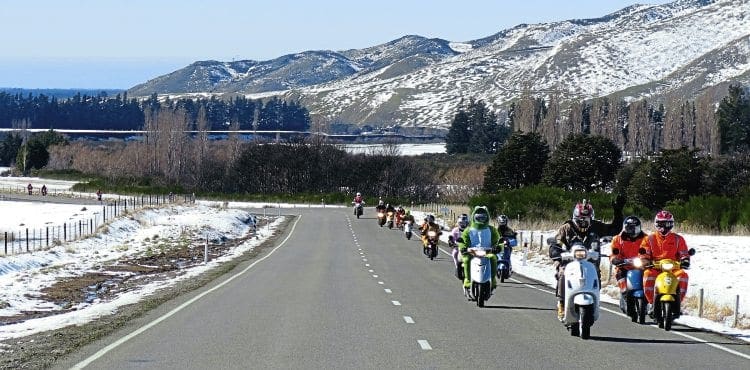
What they dreamt up is Scooter Safari, which involves riding scooters 158 miles coast to coast from east to west, over the South Island’s Southern Alps, raising funds for the New Zealand Cancer Society. The route, now State Highway 73, was used by the early Maori inhabitants as a greenstone trade path, and in 1864 was surveyed by Arthur Dobson, which led to the discovery of Arthur’s Pass. A route from Christchurch to Hokitika was completed in 1866, which coincided with New Zealand’s gold rush.
The organisers say that Scooter Safari is not a race, but nor is it for the faint-hearted – it’s designed to be the coldest, longest, hardest, most gruelling and most uncomfortable test of endurance on a city scooter.
Enjoy everything MSL by reading the monthly magazine, Subscribe here.
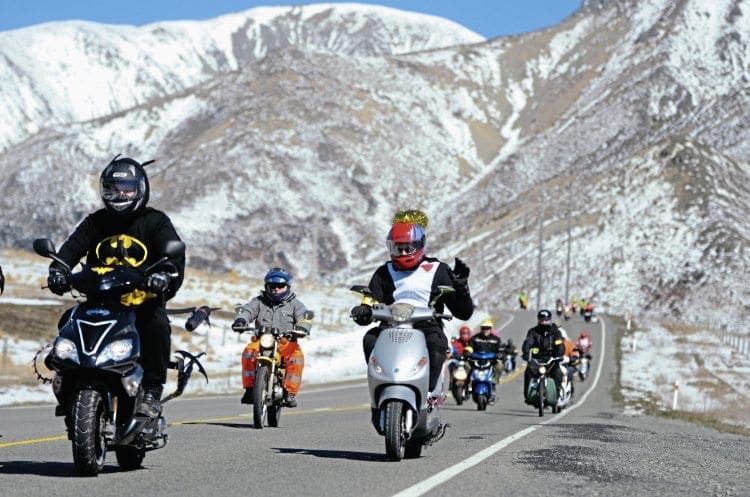
Ideally, riders are on a 50cc scooter capable of 30-34mph on the open road – any scooter can enter, but the smaller the better, to stay with the idea of enduring some hardship, like those living with cancer. And an eight-hour plus journey at 30mph on a 50cc machine – riding over mountains in the cold – is certainly worth being sponsored for. To lighten the serious background of the Safari’s purpose, many punters dress up quite ingeniously for the occasion.
The fifth Scooter Safari kept up this strong tradition, with around 1000 riders, spectators and support crew assembled at Christchurch’s Mike Pero Motorsport Park for a 9am start with a warm up of four laps around the track, then setting off in good weather through the Canterbury Plains to the small village of Sheffield, near Waimakariri Gorge. Riders ranged from cancer patients or survivors to hospital workers and corporate teams, as well as general scooter enthusiasts from all ages and walks of life.
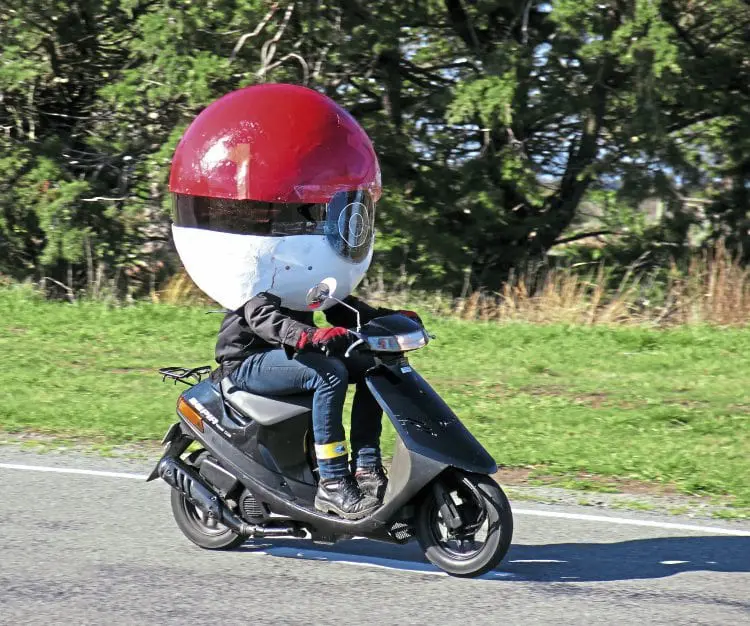
After leaving Sheffield’s famous pie shop, the road slowly begins to wind its way up into the foothills of the Southern Alps. The scenery changes constantly as you head towards the challenging Porters Pass climb (939m), which is the third-highest point on the South Island’s state highway network. Some scooters need pushing up this climb, but it does afford a good view of the Canterbury Plains. After a stop at Lake Lyndon to regroup and refuel, the journey continued onto Arthur’s Pass for lunch.
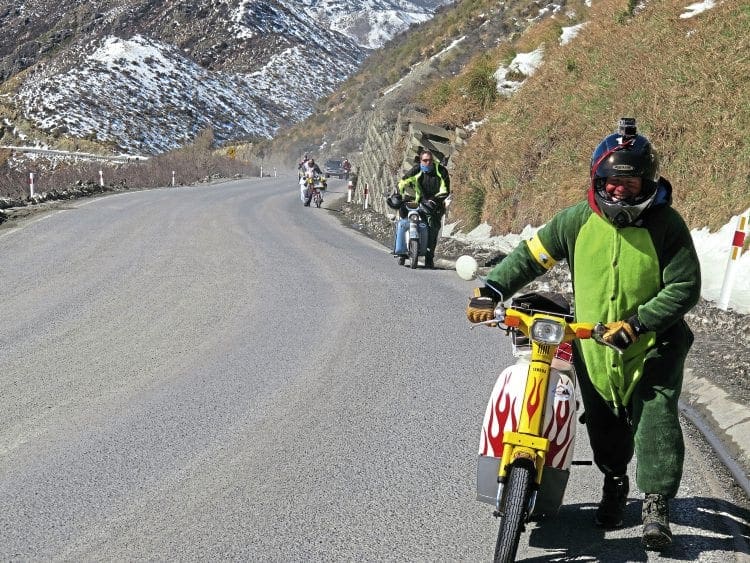
Stephen Reading was riding a Yamaha 50: “Cancer had shown up on our doorstep one day, so as part of our positive response to this we jumped at the chance to ride in the Scooter Safari. Scrambling to find a suitable machine, we eventually pulled an old Yamaha 50cc step-thru out of a dusty back shed in the eleventh hour, added fresh fuel and prayed hard to the god of speed and endurance. Life was breathed back into the wee 1970s icon on just the fourth kick and a quick blat round the block on a rainy Saturday proved it still worked. This would do just nicely.
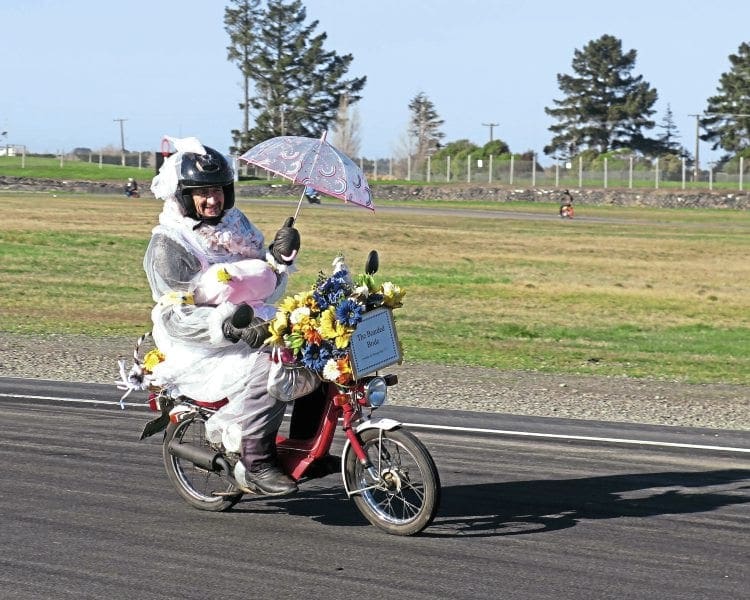
“Calling on every drop of horsepower the little two-stroke had to offer, we ground up Porters Pass at little more than walking speed, then throttle wide open, through the descent into Lake Lyndon car park. Pulling the bike onto its stand and dropping my helmet in the snow I was met with concerned looks as the searing hot engine crackled in protest, all internal cobwebs long since expelled. I spannered loose bits en route while other bits fell off, but we made it somehow, racing the last kilometres into Hokitika in a mad cacophony of horn-blasting riders, silhouetted against a blood-red sunset.”
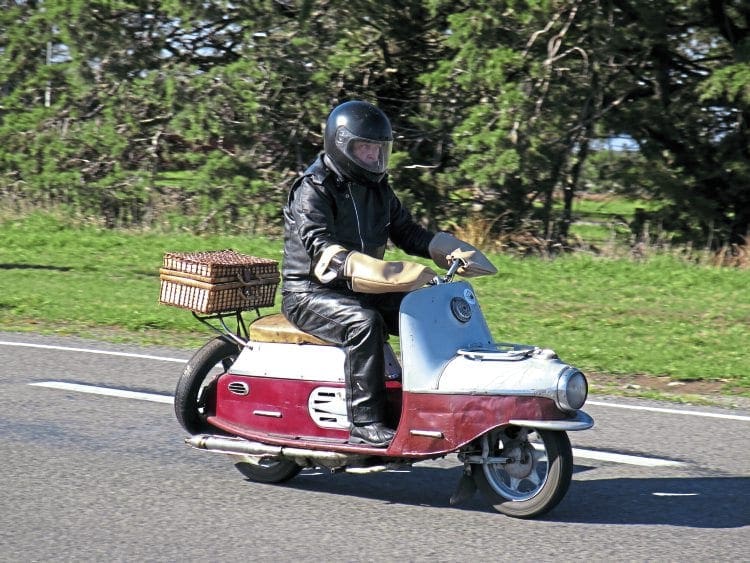
Arthur’s Pass (920m) marks part of the boundary between the West Coast and Canterbury regions and is situated nearly 90 miles from Christchurch. The small settlement lies in a saddle between the valleys of the Otira River in the west and the Bealey River in the east, with the landscape leading up to the pass reminding one of the Scottish Highlands, with its sparse scrubby vegetation and rocky outcrops.
Just a short way up the road from Arthur’s Pass village sits the Otira lookout, which affords a panoramic view across the 440m four-span Otira Viaduct, which itself is an extraordinary engineering feat, spanning over a long stretch of unstable terrain that was prone to avalanches, slips and road closures.
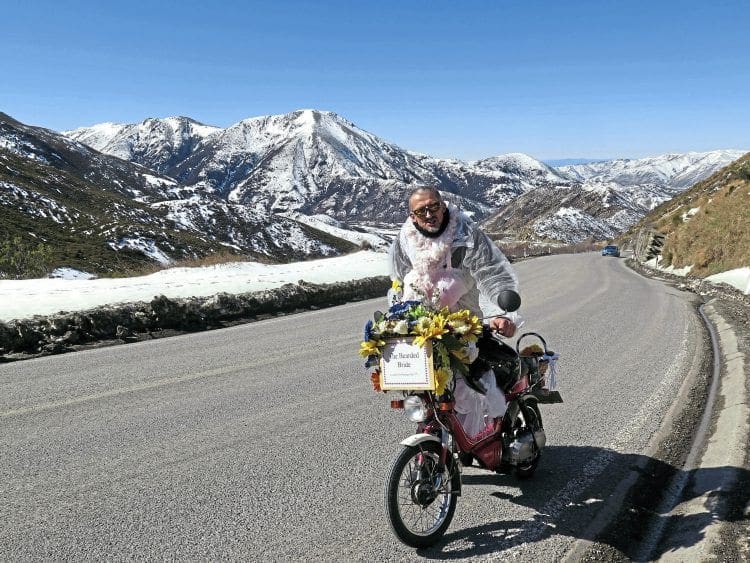
Finally over the Alps, the group headed west, down from the mountains into lush rainforests. The West Coast holds New Zealand’s best remaining stands of native forest, where the locals – affectionately called Coasters – have a laid-back attitude to life and a strong sense of community.
The Safari finished up at the Beachfront Hotel in Hokitika. Prizes were awarded ranging from the best dressed rider and team right up to the rider who suffered the most uncomfortable journey. The next ride in either May or September 2018 will be the Scooter Safari’s 6th bi-annual event, and aims to reach $1 million supporting the cause against cancer.
Words: Uli Cloesen Photography: Scooter Safari
[googlemaps https://www.google.com/maps/d/embed?mid=1ctXhDvj0ioj55AWwIOep7M8UkQU&w=640&h=480]






